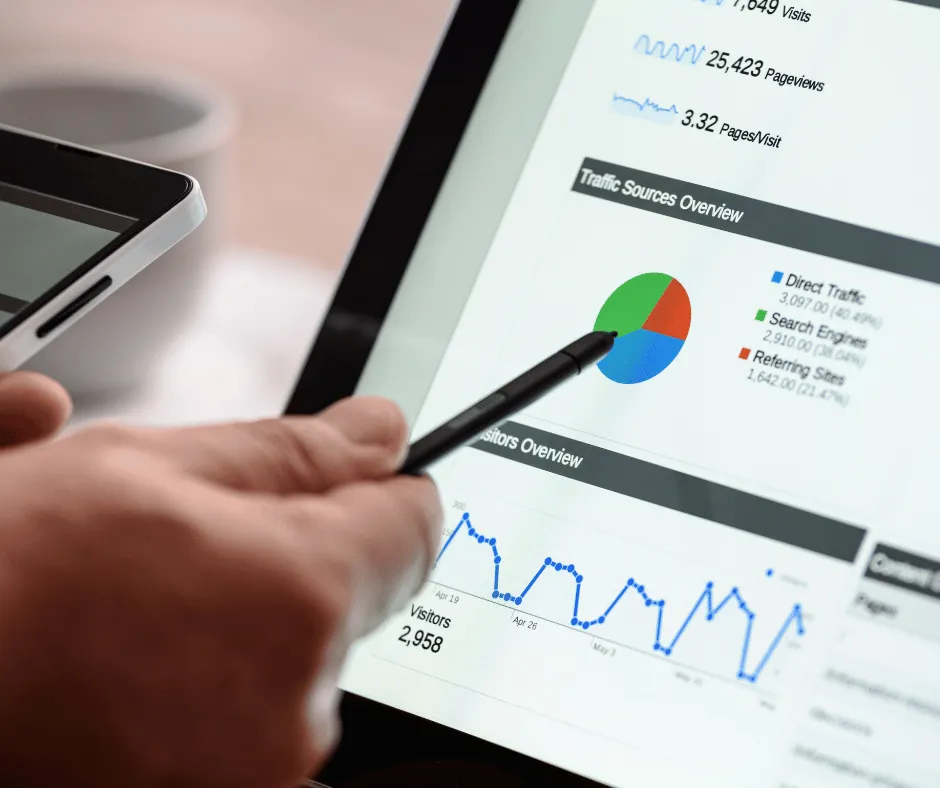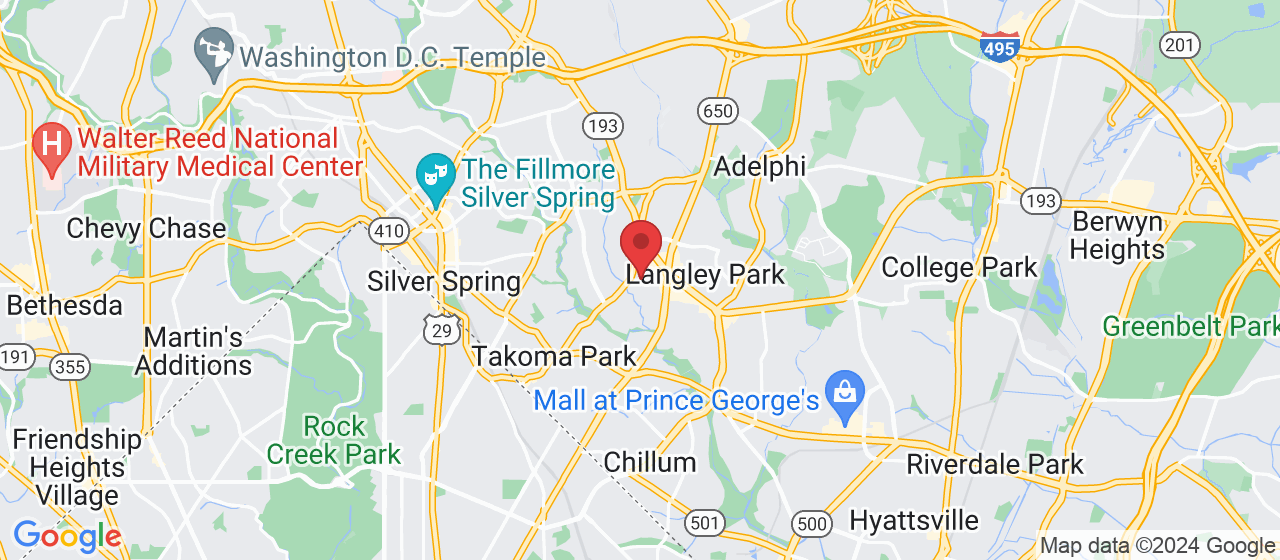

Contact US
Thank you for considering Konig Digital for your digital marketing needs. We are here to answer any questions you may have and help you get started on your journey towards achieving your online goals.
70% of customers prefer to message with businesses
- The Washington Post
You can contact us through any of the following methods:
Email: [email protected]
Phone/Text: +1 (240) 202-2609
Address: 7903 Cole Ave, Takoma Park, MD 20912, United States
Alternatively, you can fill out the contact form and one of our representatives will get back to you as soon as possible:
We look forward to hearing from you and helping you achieve success online.
Transform Your Business with Smart Marketing Automation Software...

Local Service Ads vs Google Ads: Understanding the Key Differences
When it comes to online advertising, Google Ads has been a go-to platform for many businesses for quite some time.
Are you looking for a way to boost your local business’s online visibility and attract more customers? Look no further than Google Local Services Ads.
These ads are specifically designed for local service providers, such as plumbers, electricians, and cleaners.
In this article, we’ll explore the differences between Local Service Ads by Google and Google Ads and explain how you can set up your own Local Services Ads campaign.
Local Service Ads by Google are a newer advertising platform that allows local service providers to advertise their services to customers in their area.
With these ads, businesses can increase their online visibility, receive leads, and connect with potential customers.
One of the biggest differences between Local Service Ads and Google Ads is the pay for results model. With Local Service Ads, businesses only pay for leads they receive through the platform.
In contrast, Google Ads uses a cost-per-click model where businesses pay each time someone clicks on their ad.
Another key difference between Local Service Ads and Google Ads is the ad placement.
Local Service Ads only appear at the top of search results pages and on Google Maps, while Google Ads can appear at the top or bottom of search results pages and on other Google properties such as YouTube and Gmail.
To set up your own Local Service Ads campaign, you’ll need to follow a few steps. First, you’ll need to create an account on the Local Services Ads platform and fill out information about your business, including services offered, service areas, and licensing information.
Then, you’ll need to pass a background check to verify your business’s legitimacy.
Once your business is verified, you can set your budget and create your ad campaigns. Local Service Ads by Google allow you to target customers based on their location and the services they need. You can also set up specific schedules for when your ads appear.
In summary, Local Service Ads by Google are an effective way for local service providers to increase their online visibility and connect with potential customers.
With a pay for results model and specific ad placement, Local Service Ads offer a unique approach to online advertising that sets them apart from Google Ads.
If you’re interested in setting up your own Local Service Ads campaign, follow the steps outlined above to get started.
However, with the introduction of Local Service Ads, there has been some confusion about the differences between the two. In this blog post, we’ll explore the key differences between Local Service Ads and Google Ads.
First, let’s define what each platform is:
Google Ads, formerly known as Google AdWords, is an online advertising platform developed by Google. It allows businesses to create ads that appear on Google search results pages and other Google properties.
Local Service Ads, on the other hand, is a newer advertising platform also developed by Google. It’s designed specifically for local businesses and allows them to advertise their services on Google search results pages and Google Maps.
Now, let’s look at some of the key differences between the two platforms:
Ad Placement: Google Ads can appear at the top or bottom of search results pages, as well as on other Google properties such as YouTube and Gmail. Local Service Ads, however, only appear at the top of search results pages and on Google Maps.
Targeting: With Google Ads, businesses can target their ads based on keywords, demographics, location, and more. Local Service Ads, on the other hand, are targeted based on the services the business offers and the location of the customer.
Cost: Google Ads uses a cost-per-click (CPC) model, where businesses pay each time someone clicks on their ad. Local Service Ads use a cost-per-lead (CPL) model, where businesses pay for each customer lead they receive through the platform.
Verification: Local Service Ads requires businesses to go through a verification process to prove they are a legitimate, licensed business. Google Ads does not have this requirement.
Reviews: Local Service Ads includes a review system where customers can leave feedback about their experience with a business. Google Ads does not have this feature.
Differences in Keyword Research: Google Ads vs. Local Service Ads
Google Ads: When you're managing a pay-per-click (PPC) campaign through Google Ads, keyword research becomes a critical task that you'll handle personally or through your marketing team.
This involves identifying specific words and phrases your potential customers might use when searching online.
The keywords need to align closely with your business offerings and customer inquiries, guiding them to your website.
Local Service Ads: On the other hand, Local Service Ads simplify the process considerably. You won't need to dig into keyword research yourself.
Instead, you'll select your business category and specify the services or products you offer.
Google will then automatically generate and match relevant keywords for your business, ensuring the right audience is directed to you without the need for detailed manual input.
How Does Ad Copy Creation Differ Between Google Ads and Local Service Ads?
Creating ad copy requires a distinct approach when comparing Google Ads to Local Service Ads.
Google Ads: Flexibility and Responsibility
Customizable Copy: With Google Ads, advertisers have total control over their ad copy, allowing them to craft unique messages tailored to their target audience. This flexibility means you can highlight specific features or promotions that might appeal to potential customers.
Impact on Performance: The success of your campaigns heavily depends on the quality and relevance of your ad copy. Engaging and targeted wording can increase click-through rates and conversions.
Creative Challenges: While this customization gives advertisers creative freedom, it also demands a keen understanding of the audience and strategic thinking to stand out in a competitive landscape.
Local Service Ads: Simplicity and Consistency
Pre-Formatted Information: Local Service Ads streamline the process by utilizing a predetermined format. Instead of creating ad copy from scratch, businesses provide essential details, which are then used to generate ads.
Focus on Essentials: This approach saves time and reduces complexity, as the focus is on accurate information rather than creative wording.
Standardized Presentation: By standardizing information, the ads maintain consistency and reliability, aiding in building trust with prospective clients.
In summary, while Google Ads empowers businesses with creative control and the potential for personalized messaging, Local Service Ads offer a straightforward, time-efficient solution focused on clarity and consistency.
Understanding the Google Guarantee Badge and Its Role in Local Service Ads
The Google Guarantee Badge is a symbol of trust and credibility that businesses can earn through the Local Services Ads platform. This badge is prominently displayed next to a business's name in search results, offering reassurance to potential customers.
How It Works:
Verification Process: To earn this badge, businesses must undergo a thorough verification. This often involves background checks and license verification, ensuring the business meets high-quality standards.
Customer Assurance: When a business displays the Google Guarantee Badge, it signals to potential customers that Google vouches for the business’s reliability. This increases consumer confidence by providing a layer of security.
Relationship with Local Service Ads:
Enhanced Visibility: By incorporating these badges, Local Service Ads make businesses more noticeable in search results. This differentiation helps businesses stand out among competitors.
Boosted Credibility: The badge enhances a business’s reputation by showing that it has Google's backing. This can lead to higher conversion rates, as customers are more likely to trust and engage with verified, guaranteed businesses.
In essence, the Google Guarantee Badge is a key feature of Local Services Ads, aimed at elevating consumer trust and improving business outcomes.
Are Local Service Ads Available for All Business Types and Industries?
Local Service Ads (LSAs) are predominantly tailored for specific business categories and job types, focusing on helping service-oriented businesses connect with nearby customers. However, LSAs are not universally available to all industries or business types.
Industry Restrictions:
LSAs cater mainly to certain service industries.
The eligibility depends on factors such as location and business type.
It's important to check the current list of supported industries to determine if your business qualifies.
What if Your Business Doesn't Qualify?
While many local service providers find themselves on the list, some businesses might still be left out.
In instances where your business does not qualify, exploring alternative advertising channels, such as Google Ads, can be a beneficial option. Google Ads offers a wider net of opportunities that cater to a broader range of business types.
In summary, while LSAs offer a targeted approach for many service-based industries, they are not a one-size-fits-all solution. Exploring eligibility and alternative platforms ensures you find the right fit for your advertising strategy.
So which platform is right for your business?
It depends on your goals and the nature of your business. If you’re a local service provider, such as a plumber or electrician, Local Service Ads may be a better fit for you.
These ads are specifically designed for local businesses and only show up when potential customers search for your specific business type. This targeted approach ensures your ads are seen by the right audience.
Local Service Ads also operate on a pay-per-lead model, meaning you only pay when a potential customer contacts you directly through the ad. This can be more cost-effective than the traditional pay-per-click model of Google Ads, allowing you to manage your advertising budget more efficiently.
Moreover, Local Service Ads can enhance your credibility by positioning your business as a trustworthy leader in your industry. Customers are more likely to engage with businesses that are highlighted as reputable and reliable.
If you have a more general product or service that you want to advertise, Google Ads may be a better choice. This platform offers broader reach and is ideal for businesses looking to attract a wider audience beyond local searches.
Local Service Ads and Google Ads have their similarities and differences. It’s important to understand these differences and determine which platform is best for your business based on your goals, target audience, and budget.
As advertising platforms like Google Ads and social media ads continue to evolve, businesses may have questions about how to effectively use them to reach their target audience.
Both Google Ads and Local Service Ads offer distinct advantages that can enhance your marketing returns as a small business. The choice between them depends on your business goals, target audience, and budget.
If you’re a local service provider, such as a plumber or electrician, Local Service Ads may be a better fit for you. They are designed to connect local businesses with nearby customers actively seeking specific services, potentially increasing your visibility and conversion rates in your immediate area.
On the other hand, if you have a more general product or service that you want to advertise, Google Ads may be a better choice. This platform allows for broader reach and more versatile advertising options, helping you target a wider audience across different locations and demographics.
It's important to understand the similarities and differences between Local Service Ads and Google Ads. By evaluating which platform aligns best with your specific business type and local area, you can maximize your marketing return.
Here are some of the top frequently asked questions (FAQs) about ads:
What are the different types of ads available?
There are various types of ads available, depending on the platform. Some common types include search ads, display ads, video ads, shopping ads, and social media ads. Each type has its own benefits and can be used for different purposes.
How much do ads cost?
The cost of ads can vary widely depending on the platform, the type of ad, and the competition for the targeted keywords or audience. Some platforms, like Google Ads, use a pay-per-click model where businesses pay for each click on their ad. Others, like social media ads, may use a cost-per-impression or cost-per-action model.
How do I target my ads?
Most advertising platforms offer targeting options such as location, demographics, interests, and behavior. You can also target based on keywords or specific websites. Understanding your target audience and their behaviors can help you effectively target your ads.
How can I measure the success of my ads?
Each platform provides metrics to measure the success of your ads, such as click-through rate (CTR), conversion rate, and cost per conversion. It’s important to set specific goals and track these metrics to determine the success of your ads and make adjustments as needed.
How do I write effective ad copy?
Effective ad copy should be clear, concise, and targeted to your audience. Use attention-grabbing headlines and highlight the benefits of your product or service. It’s also important to use strong calls to action to encourage users to take action.
Should I hire a professional to manage my ads?
Hiring a professional to manage your ads can be beneficial if you’re unfamiliar with the platform or don’t have the time or resources to manage your campaigns effectively. A professional can help optimize your campaigns, improve targeting, and provide insights into your audience.
When to Reconsider Using Google Ads
Although Google Ads can be a powerful tool for boosting your online visibility and reaching a wider audience, there are situations where it might not be the best option for your business. Here’s when you might want to think twice about using this advertising platform:
Lack of Keyword Research Skills: If you're not comfortable or experienced with conducting thorough keyword research, Google Ads might not provide the return on investment you're hoping for. Targeting the wrong keywords can lead to wasted spend with minimal results.
Primarily Local Focus: Businesses that cater exclusively to a local audience might find more success with other, more targeted advertising avenues. Platforms like local directories or community-based marketing might offer better results.
Limited Advertising Budget: If you're operating on a tight budget, the cost-per-click model of Google Ads might quickly eat into your funds without significant results. It’s essential to ensure your budget can sustain a competitive bidding strategy.
Past Attempts Unsuccessful: If you've previously tried Google Ads and it didn’t yield satisfactory results, it might be time to evaluate other marketing tactics. Consider whether your campaign structure, ad content, or targeting was optimized before giving it another go.
By evaluating your business needs and capabilities, you can make a more informed decision on whether Google Ads is the right fit for you. Consider exploring other marketing strategies that align better with your specific goals and strengths.
Local Service Ads by Google are an effective way for local service providers to increase their online visibility and connect with potential customers. If you're looking to boost your presence, foster qualified leads, and engage with your local community, these ads are definitely worth considering.
With a pay-for-results model, Local Service Ads offer a unique approach to online advertising that sets them apart from traditional Google Ads. This model means you only pay for the leads you actually acquire, making it a cost-effective option for businesses focused on tangible outcomes.
Additionally, the specific ad placement ensures that your services are prominently displayed, enhancing your visibility to those most likely to convert into customers. By targeting your local area, these ads help you connect with the right audience, maximizing your marketing efforts and driving meaningful results.
In conclusion, advertising can be a powerful tool to reach your target audience and drive sales. Understanding the various types of ads available, how to target effectively, and how to measure success can help you make the most of your advertising budget. Don’t hesitate to seek help from a professional if needed to maximize your results.
Konig Digital, LLC
Address: 7903 Cole Ave, Takoma Park, MD 20912, United States
Email: [email protected]
Phone No: +1 (240) 202-2609
Hours:
Weekdays – 8 AM to 5 PM
Weekends- OFF

2025 All rights Reserved | Sitemap







